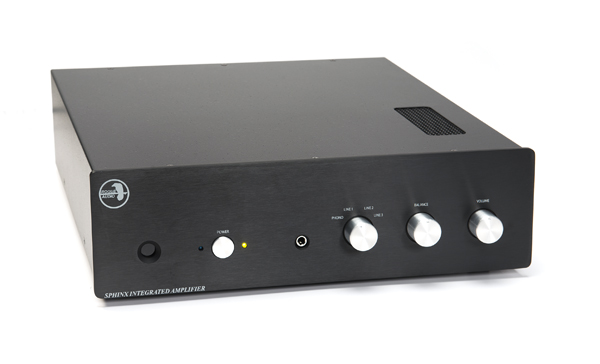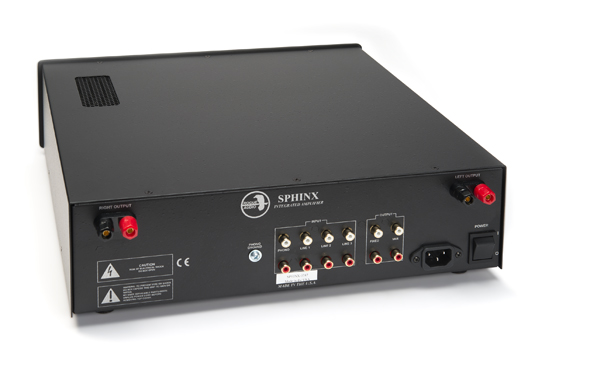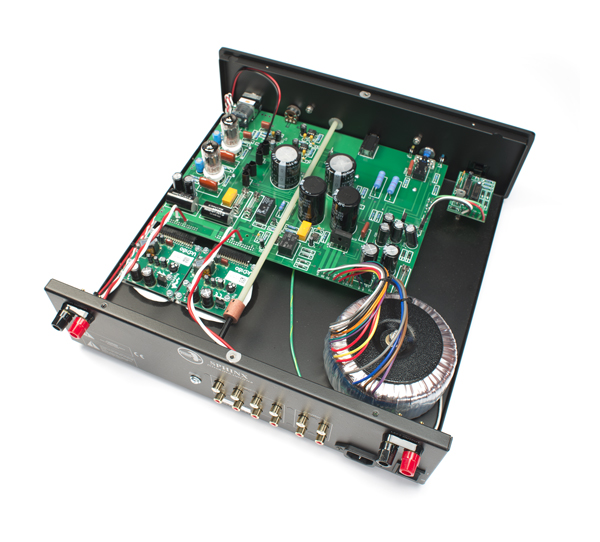 Rogue Audio, out of Brodheadsville, Pa., has been building rugged tube components since the 1990s, and as a result, the company enjoys a fiercely loyal customer base. Under the direction of owner and lead designer Mark O’Brien, Rogue makes great-sounding, reliable, and fairly priced gear. Half a dozen Rogue products have come through this listening room, and none have failed to impress on a sonic level, and they all offer unusually good value.
Rogue Audio, out of Brodheadsville, Pa., has been building rugged tube components since the 1990s, and as a result, the company enjoys a fiercely loyal customer base. Under the direction of owner and lead designer Mark O’Brien, Rogue makes great-sounding, reliable, and fairly priced gear. Half a dozen Rogue products have come through this listening room, and none have failed to impress on a sonic level, and they all offer unusually good value.
Sparing its customer base constant product churn (as well as questionable features and hyperbolic marketing), Rogue offers what it calls “Magnum Upgrades” for a variety of products, which allow owners to make incremental investments in better sound. From the entry-level Titan series to the flagship Apollo monoblock amplifiers, Rogue offers a wide spectrum of components.
Recently, the company introduced a series of amplifiers with rather unique topology. The Hydra and Medusa power amplifiers feature a tubed input stage, with a hyper-engineered class-D output stage, which is built specifically for this tube input. Rogue calls the trademarked circuit tubeD. Having spent quite a bit of time with the 100-watt-per-channel Hydra, I am convinced that the Rogue engineers are onto something.
The company has decided to parlay these designs into a pair of integrated amplifiers, the 175-watt Pharoah, and its little sibling, the 100-watt Sphinx, which is priced at $1,295. The supplied Sphinx review unit is black; silver is also available. The amp has a bit of a retro-chic aesthetic—a distinct classic American hi-fi vibe is apparent—with beautifully machined front-panel knobs and a matte finish.
It must be noted that the current market for entry-level integrated amplifiers is crowded. Many of these products are made overseas, with off-the-shelf parts and microprocessor-controlled functions. High-powered products made in the USA, however, are quite rare in this market. Rogue, which builds its gear stateside and uses as many American-sourced parts as possible, manages to deliver products priced less than what some audiophiles pay for power cords. So how does it stack up?
Nuts & Bolts
The Sphinx is equipped with three line inputs, a phono input and a headphone jack. The phono section is a MM/MC type for high-output cartridges. Surprisingly, there is a balance control, which is not often seen in this price range. Rogue employs a matched pair of 12AU7 tubes for the input stage. The amplifier runs cool and quiet, and all connectors appear to be high quality. The circuit features a slow start-up when the power button is engaged, to allow the input tubes time to stabilize. Rogue also offers a solidly built metal remote control, which is an option and lets you to change the volume but not select input.
Listening
After breaking in the Sphinx for a week, I am treated to vivid, spacious and engaging sound, regardless of source or genre. The amp has absolutely no problem driving either a pair of KEF LS50s or Genesis G7c monitors to room-overloading levels. The Sphinx keeps its composure, even at high volume, with no graininess creeping in—which is remarkable for an amp at this price point, where speakers as revealing as these typically expose an amp’s shortcomings.
If the Sphinx has a sonic signature, it is not easy to detect. After a few weeks of post-break-in listening, I pick up a slightly forward character—not forward as in tipped up, but in the sense that it brings the listener a few rows closer to the action. The Sphinx provides a lovely sparkle to the midrange, which makes voices and strings float beautifully in space. Performances are imparted with a vivid, lifelike and highly enjoyable quality.
An album I stream repeatedly during the review period is Diego Garcia’s Laura, which showcases the Sphinx’s ability to grab the listener’s attention and direct it through a clean window into the music. Garcia’s lush, romantic ballads, embellished with flamenco guitar flourishes and other exotic touches, sound simply ravishing.
The 2013 remix and remaster of Jethro Tull’s classic album Benefit is a revelation through the Sphinx. Ian Anderson’s voice and flute are startlingly present, especially on the 96-kHz files; the same goes for the excellent SACD remaster of the Moody Blues’ In Search of the Lost Chord. The Sphinx reveals the superb quality of the DSD transfer overseen by Justin Hayward, and even the previously lesser-known material, like the long last track, “King and Queen,” sounds terrific. The Sphinx is capable of subtlety yet can still provide plenty of power when called upon to do so.
As there is currently no turntable set up in my system, I lend the review sample to a trusted audiophile friend who’s a vinyl enthusiast. He reports back very positive results regarding the onboard phonostage, noting that it easily competes with other, highly regarded outboard units, and that it is at the top tier in this price range.
I give the headphone jack a whirl with a pair of Grado SR60s, and discover it to be more than just a convenient add-on. The performance is easily on par with several stand-alone headphone amps I have on hand.
I do manage a quick comparison with my reference integrated amp, the 200-watt McIntosh MA6600 solid-state beast, which is laid back compared to the Sphinx’s more exciting presentation. Transparency and midrange resolution are very, very close, with a slight nod to the far more expensive amp—too close for comfort considering that the McIntosh costs five times as much. This is certainly a case of a welterweight going toe-to-toe with a heavyweight and not finishing on the canvas.
Perhaps the one complaint I can log is that controlling the volume via the remote is inexact. The volume steps are too large to find the precise setting my ears desire, but this only applies when using the remote. The volume knob on the unit provides all the volume sweep necessary. I will note that the balance control is a nice plus, providing very good tracking, and that the unit works without flaw during the review period. It is also good to know that Rogue offers a 3-year warranty.
At a hair under $1,300, the Rogue Sphinx sets new benchmarks at this price point. Its sonics, build and feature set are impressive. And while Rogue essentially takes a somewhat classic approach with the Sphinx—aside from the unique class-D and tube design—the end result trumps circuit topology. Pair the Rogue Sphinx with price-appropriate speakers, a source and cables, and for about $5,000 you have a system that will provide more enjoyment than it should for that much scratch. Hats off to Rogue Audio.
Additional Listening
By Jeff Dorgay
Seeing a phono input on a preamplifier, let alone an integrated amplifier, is catnip to me. As an audio old-timer, I remember fondly when everything had a phono input and everyone had a turntable. It’s great to see Rogue including a phonostage on a product that is this reasonably priced.
I certainly concur with Andre on the overall sonics of this unit, so no need to embellish there. But in the day of $1,000 dollar phonostages being commonplace (seriously, in the day of $10,000 phonostages being commonplace!!), a great integrated amplifier thrown in with this phonostage is a steal.
Your favorite MM cartridge will make this thing sing. We pair the Sphinx with the MartinLogan Aerius i speakers in room two and a Rega RP6 table, featuring an Exact 2 cartridge, as well as a ProJect Carbon/Ortofon Red combination. Both turn in excellent performances, with a good tonal range, top to bottom, excellent transient response and, best of all, a low noise floor. The Sphinx is in no way outclassed by the nearly $2,000 Rega combination.
There hasn’t been a more versatile entry-level amp to come my way in some time, so I’m happy to award the Rogue one of our Exceptional Value Awards for 2013. Well played, Rogue.
Sphinx Integrated Amplifier
MSRP: $1,295
Peripherals
Amplifier
McIntosh MA6600
Digital
Oppo 105
Speakers
KEF LS50 Genesis G7c
Cables
Darwin Transparent DH Labs
Accessories
Sound Anchor stands Audience aR2p power conditioner

















